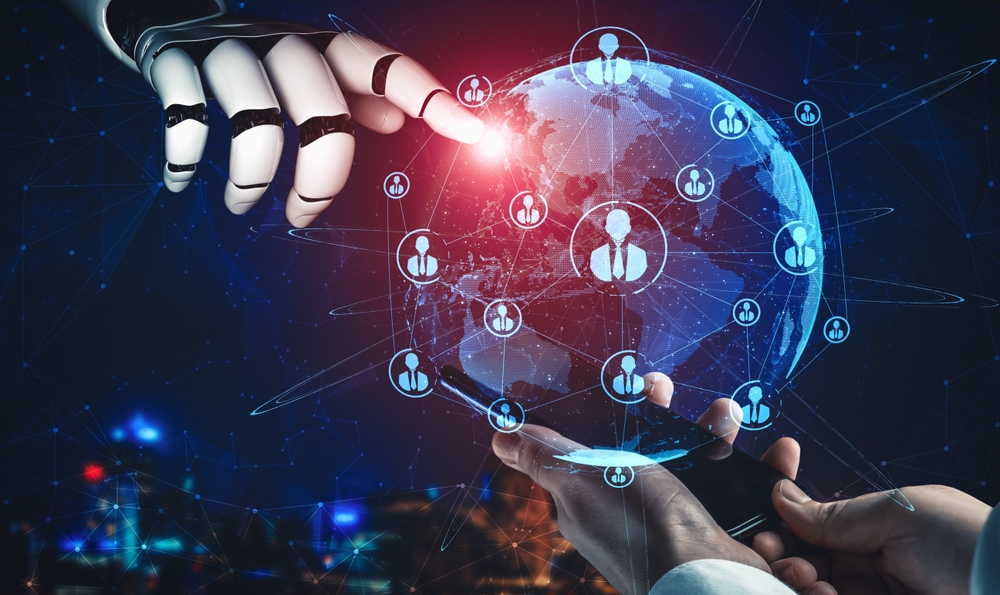
Why aren’t we using Artificial intelligence (AI) for these days? It may come as no surprise that it is now an integral part of the job recruitment process—both for employers and job seekers. The question is, though, How can you keep up with the ever-evolving technology and trends when job-seeking or working in the sector?
Whether you’re a savvy job seeker hoping to gain an AI advantage or a hiring manager in search of streamlined processes or finding the best candidates without bias, you can learn how to leverage AI during the job recruitment process.
Using AI as a Recruiter
As a recruiter, you can count on AI tools to provide three distinct benefits: streamlining workflows, reducing bias, and improving hiring decisions. We’ll consider each in turn.
Automate the Process
AI tools can take the tedium out of many necessary tasks during the recruitment process. Likely you are already using an applicant tracking system (ATS) with AI attributes. Such systems are best known for sorting through the hundreds of applications you receive to deliver a handful of candidates that are the “best fit” for each role.
Did you know that AI tools can do more? For one thing, AI-powered ATS can “learn” as time goes by, making their determinations more accurate and less arbitrary. For example, natural language processing might allow the system to learn variations on terms to describe a critical skill. This will prevent candidates who use slightly different wording from the programmed keywords from being eliminated.
AI can also help you with communications. You can automate emails providing updates to candidates or establish a chatbot to answer common applicant questions. You can even use these tools to schedule assessments or interviews. When you delegate such tasks to AI, you free up your own time to pursue other necessary tasks.
Reduce Bias
We’ve already discussed how AI tools can help rate a candidate’s suitability for a specific role. This process can also reduce bias. How?
First, AI tools should not be swayed by subtle indicators of race, age, gender, or other qualities. When the possibility of implicit bias is removed from the equation, candidates can be ranked on merit alone.
Second, the AI decisions are not affected by variables such as tiredness, distraction, or boredom. Imagine a hiring manager who inadvertently passes over a gem of a candidate because he’s had a long day and is suffering from a headache. AI algorithms never suffer from reduced productivity for these reasons.
Make Better Decisions
ATS can collect vast amounts of data concerning your recruitment and hiring processes. But who is going to crunch the numbers and put that data to work? This may not be included in the regular tasks of your HR team. AI tools can do this for you, however.
AI can quickly analyze data, identifying any trends. This data can then be used to make more informed decisions. You may even be able to get ahead of the game by using predictive analytics software to anticipate retention, demand, and other trends.
Leveraging AI as a Candidate
We’ve seen how AI can help employers. What about candidates?
First, understanding the above—how ATS systems work and the diversity of tools used by employers—can help job-seekers navigate the process and mitigate frustration. For example, you can be alert to include the keywords the ATS will search for.
But how can you do this? You, too, can turn to AI for assistance. For example, many job seekers are using ChatGPT for job applications. You can generate a basic resume or cover letter template by feeding the job description into an AI text generator along with the right prompt. Or, you can copy/paste your document into the generator and ask for suggestions. Keep in mind, however, that you should always review, personalize, and edit any content created with the help of AI.
You can also use AI for learning new skills. For example, if you need to cultivate a required skill or brush up on one you haven’t used in a while, you can ask a text generator like ChatGPT to answer specific questions, offer a step-by-step guide, create a quiz or interactive exercise, or suggest websites, books, or courses you can turn too for more information.
With rising demand for AI professionals in many fields, increasing your AI expertise may be a good place to start!
Key Takeaways
What does the future hold for AI-driven recruitment? Avery Konda, Talent Solutions Manager for Randstad Canada, outlined a nearly utopian future in a recent article. He describes “endless possibilities… from virtual reality (VR) simulations for job interviews to AI-powered talent analytics and predictive workforce planning.”
Whether you’re an employer or a would-be employee, take time to become acquainted with today’s AI-driven technology. Make an effort to stay informed about new technologies as they arise. Finally, don’t be afraid of AI tools—utilize them to perform tasks efficiently, save time, and increase the precision of the decisions you make.

 < 5K
< 5K
 6
6


 36.8K
36.8K
 26.66%
26.66%
 34
34


 < 5K
< 5K
 1
1


 43.7K
43.7K
 31.1%
31.1%
 0
0

 96.1K
96.1K
 14.73%
14.73%
 7
7

 474.9K
474.9K
 33.83%
33.83%
 45
45


 9.3K
9.3K
 40.04%
40.04%
 35
35


 < 5K
< 5K
 39.68%
39.68%
 1
1


 839.4K
839.4K
 22.16%
22.16%
 4
4


 13.4K
13.4K
 100%
100%
 3
3
































